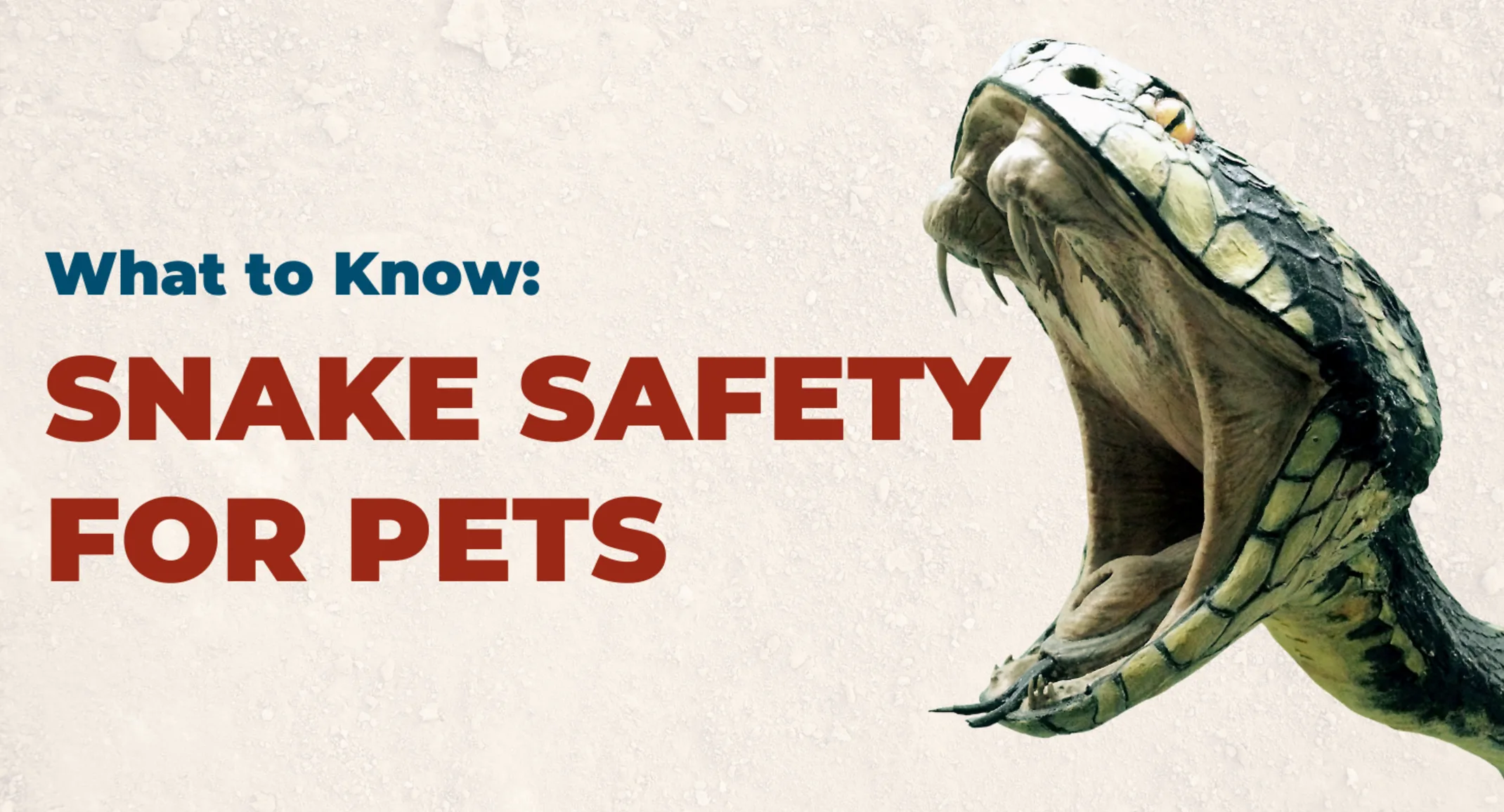Snake Safety for Pets in Southwest Florida: Prevention and Emergency Tips
Pet Safety

Southwest Florida’s lush environment is home to a wide variety of wildlife, including several species of snakes. While many of these snakes are harmless, the region is also home to venomous species like the Eastern Diamondback Rattlesnake, Cottonmouth (Water Moccasin), and Coral Snake. For pet owners, especially those with curious dogs or outdoor cats, it’s important to understand how to minimize the risk of snake encounters and know what to do if your pet is bitten.
Common Venomous Snakes in Southwest Florida
Eastern Diamondback Rattlesnake: Prefers dry, wooded areas and palmetto thickets.
Cottonmouth (Water Moccasin): Often found near freshwater sources like lakes, rivers, and swamps.
Coral Snake: Distinctive red, yellow, and black banding. More reclusive but very venomous.
Snake Safety Tips for Pet Owners
1. Stay on Cleared Trails
When walking your dog, stick to well-maintained paths and avoid tall grass, dense brush, or piles of leaves where snakes may be hiding.
2. Keep Your Yard Snake-Unfriendly
Regularly mow your lawn and trim shrubs.
Remove debris, woodpiles, and tall grass where snakes could shelter.
Seal gaps under sheds, decks, and fences to prevent snakes from taking up residence.
3. Use a Leash
Always keep your dog on a leash, especially in areas known for snake activity. This gives you better control and can help prevent your dog from investigating a snake.
4. Snake Aversion Training
Consider enrolling your dog in professional snake avoidance training. These programs can teach pets to recognize and avoid snakes through controlled, humane exposure.
5. Know Snake Activity Patterns
Snakes in Florida are most active during warmer months and early morning or late afternoon. Be extra cautious during these times.
What to Do if Your Pet is Bitten by a Snake
1. Stay Calm
Panicking can cause your pet to become more agitated and increase their heart rate, which can spread venom more quickly.
2. Minimize Movement
If possible, carry your pet to your vehicle to prevent them from walking. Less movement can help slow the spread of venom.
3. Seek Immediate Veterinary Care
Go to the nearest emergency vet clinic right away. Call ahead if possible to ensure they have antivenom available.
4. Do Not:
Try to suck out the venom.
Apply ice or a tourniquet.
Attempt to capture or kill the snake. Take a photo from a safe distance if you can, but treatment is typically based on symptoms, not species identification.
Signs of a Snakebite in Pets
Sudden yelp or signs of pain
Swelling, especially around the bite area
Puncture wounds
Weakness, collapse, or difficulty breathing
Vomiting or drooling
Seizures (in severe cases)
Final Thoughts
Prevention is always the best defense when it comes to protecting your pet from snake bites in Southwest Florida. By staying vigilant, keeping your outdoor areas tidy, and knowing what to do in an emergency, you can significantly reduce the risk and ensure the best possible outcome for your furry friend.
If you live in an area with high snake activity, speak with your veterinarian about local risks and whether the rattlesnake vaccine (available for dogs) might be appropriate.
You can view the forms in PDF format by downloading the free Adobe Acrobat reader.
